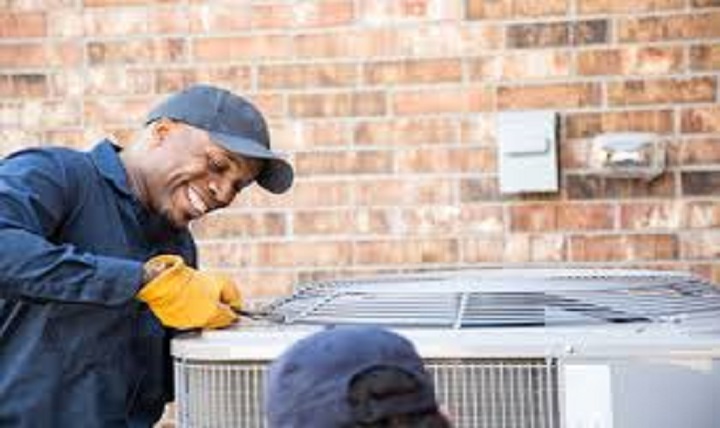When summer is here, keeping your air conditioner working effectively is important. Regular AC maintenance visits from professionals are crucial to ensure it works efficiently and lasts longer. A standard technician maintenance checklist includes changing air filters, thermostat inspection, and coil cleaning while verifying refrigerant quantities.
During an AC maintenance visit, technicians also examine electrical components before applying lubrication to moving elements, clearing the drain line, testing control systems, and completing final inspections to verify system functionality. Now, let’s continue to explore this topic further.
What Technicians Do During a Routine AC Maintenance Service
Here’s the checklist of tasks that technicians perform during regular AC maintenance:
1. Checking and Replacing the Air Filter
A cooling system cannot operate without an air filter component. The AC removes micro-impurities such as dust and dirt to maintain fresh air. The air filter captures dirt and gets clogged.
When performing maintenance, the technicians inspect the filter to check its condition. If it’s dirty, they either replace it or clean it. Installing a fresh filter can make the AC work more efficiently, make the air healthier to breathe, and even reduce energy bills.
2. Inspecting the Thermostat
The thermostat controls the temperature settings of your air conditioning system. The technicians will make sure the thermostat is working properly. They check and replace the batteries if needed during the inspection.
If you have a programmable thermostat, they can guide you through the steps to program it for energy savings. Minor adjustments can make your AC run efficiently. That’s why it’s on the maintenance checklist.
3. Cleaning the Coils
There are two coils in an AC system: the evaporator (inside) and the condenser (outside). Over time, both can accumulate dust and dirt, causing your system to work harder and leading to higher energy consumption. Technicians professionally clean the coils to restore proper airflow and improve cooling performance.
4. Checking Refrigerant Levels
Refrigerant is the cooling fluid that cools your home’s indoor air. Water leakage or low levels within your air conditioner will prevent it from functioning properly. The technicians will check this during the maintenance service.
If it is low, they will add more to maintain the recommended level. If they see signs of a leak, they will tell you what repairs are needed. With the right level, your house will remain comfy, and your AC will work effectively.
5. Inspecting Electrical Components
AC units rely on several electrical components such as wires, terminals, and control boards. The system breaks down even if one electrical connection is damaged or loose. The technicians will ensure all connections and wires are secure, tighten them, and check for wear and tear. Identifying small electrical issues early can help prevent more significant problems down the line.
6. Lubricating Moving Parts
The air conditioning unit has several moving parts, like motors and fans. These need oil or grease to move efficiently and smoothly. These components can wear out faster without enough lubrication and develop unusual noise. The service technician will lubricate all moving parts during maintenance to ensure they last longer and run quietly while contributing to energy savings.
7. Clearing the Drain Line
While cooling the air, your AC also gets rid of moisture. The moisture condenses into water, which then drains out through the condensate drain line.
The technician will check the drain line for blockages and may use a specific type of cleaner to curb mold or algae growth. This maintenance keeps the drain line clear and prevents water damage while your AC functions properly.
8. Testing AC System Controls
The control system tells your AC when to start, blow air, and shut down. The technician checks the controls to ensure they are functional and that the system turns on and off properly. If there is a lag or a strange sound, something amiss could be present. This process ensures that your equipment operates safely and that controls are properly maintained.
9. Final System Check
After completing all maintenance tasks, the technician performs a final system check. They turn on your AC and notice if there’s any unusual noise. They will also inspect the temperature and airflow within your house. This last inspection confirms the system is in proper working order after maintenance. They will let you know if they see anything else that needs to be repaired.
Conclusion
Regular AC maintenance ensures your system stays clean, safe, and operates efficiently. Technicians inspect critical components like the air filter, thermostat, coils, and refrigerant. They also inspect electrical components, lubricate moving parts, clear the drain line, and check the system controls. A final inspection ensures your AC is ready to keep your home cool and comfortable.
















